Search
PATENT PORTFOLIO
Sensors
NASA's extensive research and development in the field of sensor technology has resulted in a diverse and advanced suite of innovations. From high-precision sensors for aerospace and defense applications to cutting-edge sensors for a variety of other industries, NASA's expertise in sensor technology is rarely matched. If you're looking to take your sensing capabilities to the next level, NASA technology can help you unlock new insights, improve efficiency, and drive innovation.

Method and Device for Biometric Verification and Identification
The advantage of using cardiac biometrics over existing methods is that heart signatures are more difficult to forge compared to other biometric devices. Iris scanners can be fooled by contact lenses and sunglasses, and a segment of the population does not have readable fingerprints due to age or working conditions. Previous electrocardiographic signals employed a single template and compared that template with new test templates by means of cross-correlation or linear-discriminant analysis.The benefit of this technology over competing cardiac biometric methods is that it is more reliable with a significant reduction in error rates. The benefit of this technology is that it creates a probabilistic model of the electrocardiographic features of a person instead of a single signal template of the average heartbeat. The probabilistic model described as Gaussian mixture model allows various modes of the feature distribution, in contrast to a template model that only characterizes a mean waveform. Another advantage is that the model uses both physiological and anatomical characterization of the heart, unlike other methods that mainly use only physiological characterization of the heart. By combining features from different leads, the heart of the person is better characterized in terms of anatomical orientation because each lead represents a different projection of the electrical vector of the heart. Thus, employing multiple electrocardiographic leads provides a better performance in subject verification or identification.
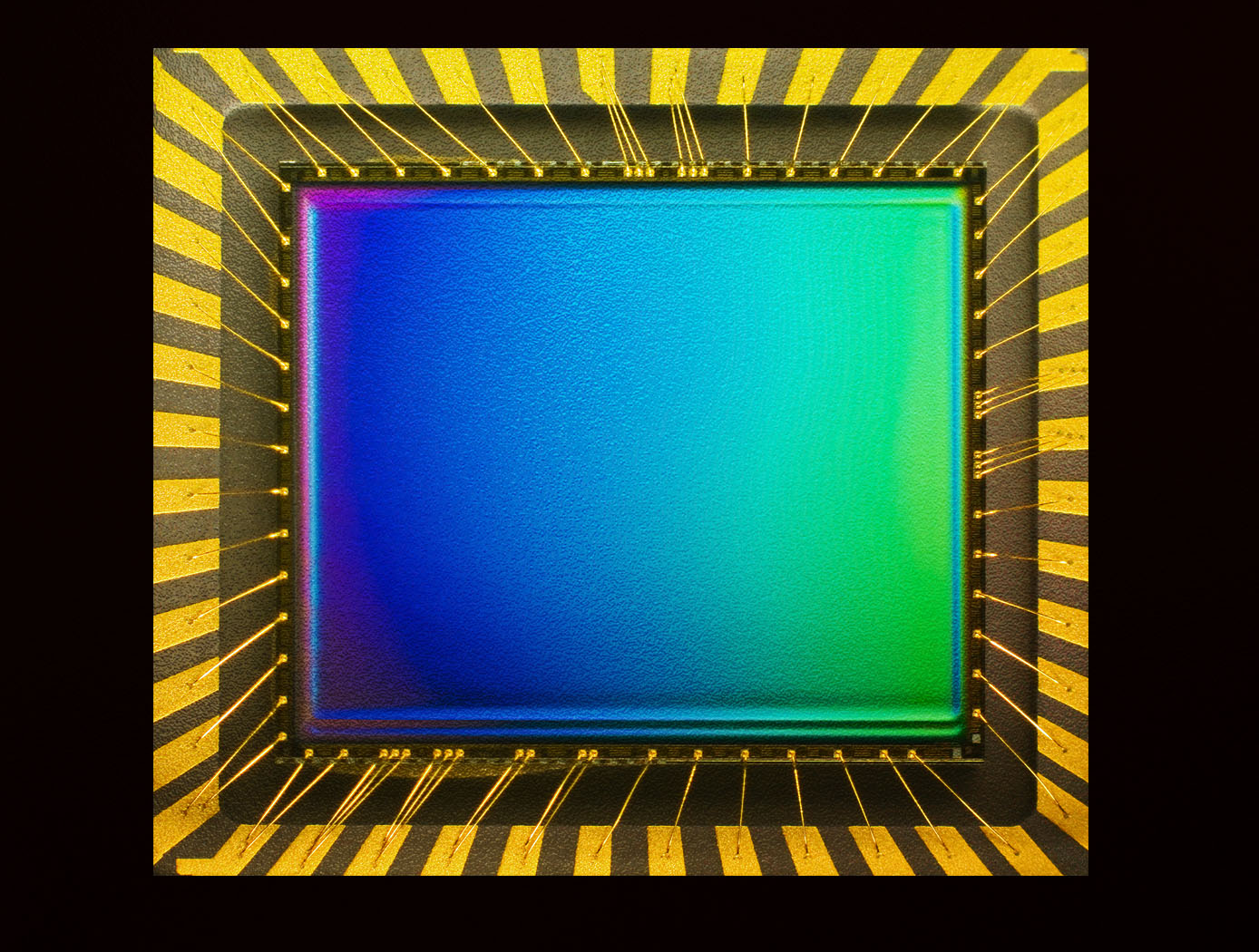
Gas Sensors Based on Coated and Doped Carbon Nanotubes
A typical sensor device includes a set of interdigitated microelectrodes fabricated by photolithography on silicon wafer or an electrically insulating substrate. In preparation for fabricating the SWCNT portion of such a sensor, a batch of treated (coated or doped) SWCNTs is dispersed in a solvent. The resulting suspension of SWCNTs is drop-deposited or injected onto the area containing the interdigitated electrodes. As the solvent evaporates, the SWCNTs form a mesh that connects the electrodes. The density of the SWCNTs in the mesh can be changed by varying the concentration of SWCNTs in the suspension and/or the amount of suspension dropped on the electrode area. To enable acquisition of measurements for comparison and to gain orthogonality in the sensor array, undoped SWCNTs can be similarly formed on another, identical set of interdigitated electrodes. Coating materials tested so far include chlorosulfonated polyethylene. Dopants that have been tested include Pd, Pt, Au, Cu and Rh nanoparticle clusters. To date, the sensor has been tested for NO2, NH3, CH4, Cl2, HCl, toluene, benzene, acetone, formaldehyde and nitrotoulene.
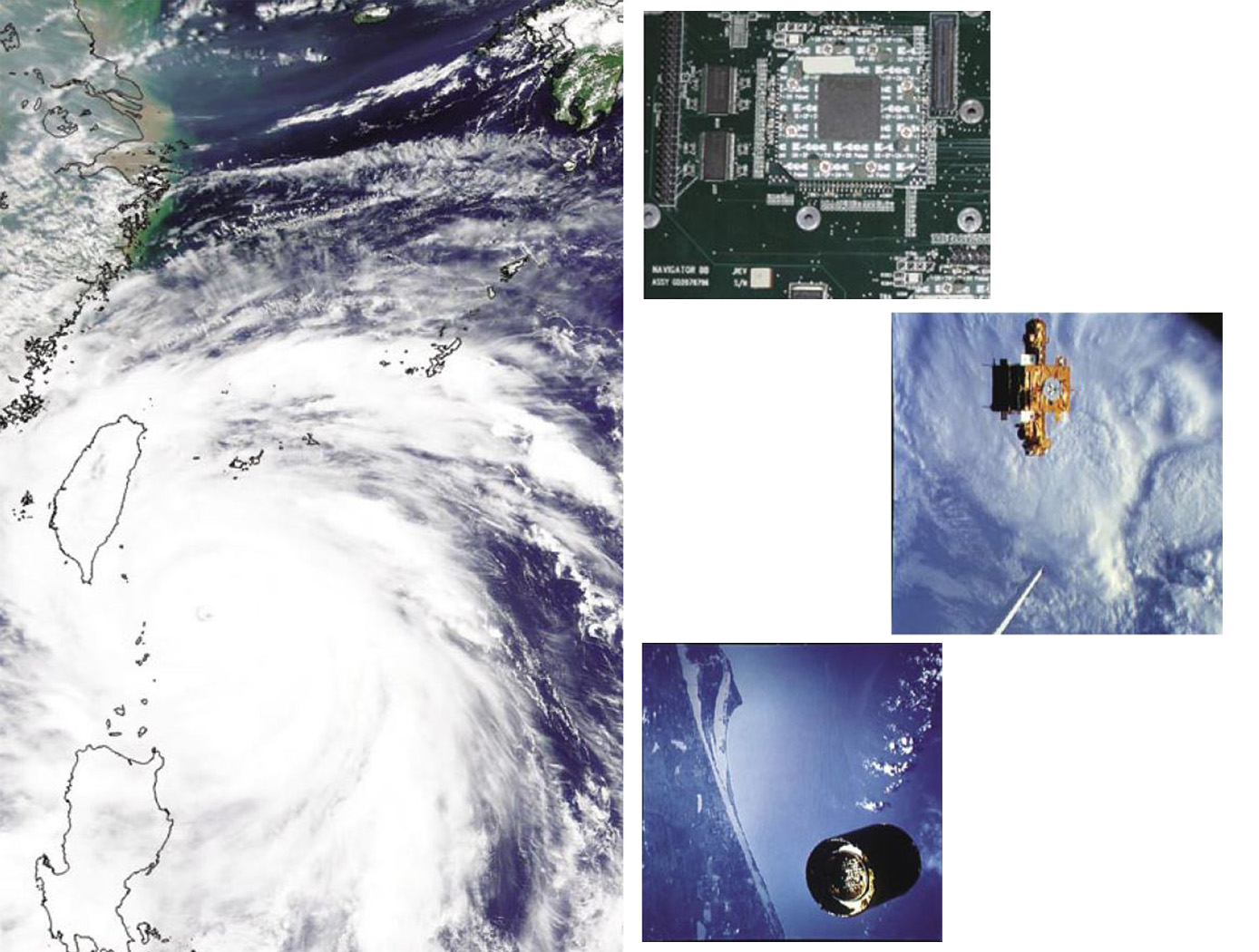
The Navigator GPS Receiver
To enable it to acquire GPS signals very quickly and also track weak signals, the radiation-hardened Navigator receiver utilizes a bank of hardware correlators, a ColdFire microprocessor, and a specialized fast acquisition module (see figure 1). The hardware is implemented in VHSIC Hardware Description Language (VHDL) to target radiation-hardened Field Programmable Gate Arrays (FPGA) rather than Application-Specific Integrated Circuits (ASIC), in order to maintain flexibility for growth and design modifications.
The Navigator was designed to operate autonomously to enable the use of GPS for onboard navigation in high altitude space missions. With the exception of GPS signals, Navigator requires no external data (e.g., current time estimate, recent GPS almanac, or converged navigation filter estimate of the receiver dynamics).
By double buffering data up front in 1ms blocks, data can be processed as it is acquired. A discrete Fourier transform (DFT) is used to calculate the 1ms correlations, significantly reducing computing time. Computational efficiency is optimized and tradeoffs among sampling rate, data format, and data-path bit rate are carefully weighed in order to increase performance of the algorithm.
In addition, the Navigators hardware-independent receiver software includes both a hardware interface to perform low-level functions as well as basic navigation. Onboard orbit determination and accurate state estimation/propagation during periods with no GPS access are accomplished by integration with the GPS Enhanced Onboard Navigation System (GEONS).
Exploiting the properties of Fourier transform in a massively parallel search for the GSP signal, the Navigator has been tested and proven capable of acquiring signals at 25dB-Hz and below.

Detection Of Presence Of Chemical Precursors
These needs are met by this invention, which provide easy stem and associated method for detecting one or more chemical precursors (components) of a multi-component explosive compound. Different carbon nanotubes (CNTs) are loaded (by doping, impregnation, coating, or other functionalization process) for detecting of different chemical substances that are the chemical precursors, respectively, if these precursors are present in a gas to which the CNTs are exposed. After exposure to the gas, a measured electrical parameter (e.g. voltage or current that correlate to impedance, conductivity, capacitance, inductance, etc.) changes with time and concentration in a predictable manner if a selected chemical precursor is present, and will approach an asymptotic value promptly after exposure to the precursor.
The measured voltage or current are compared with one or more sequence soft heir reference values for one or more known target precursor molecules, and a most probable concentration value is estimated for each one, two, or more target molecules. An error value is computed, based on differences of voltage or current for the measured and reference values, using the most probable concentration values. Where the error value is less than a threshold, the system concludes that the target molecule is likely. Presence of one, two, or more target molecules in the gas can be sensed from a single set of measurements.
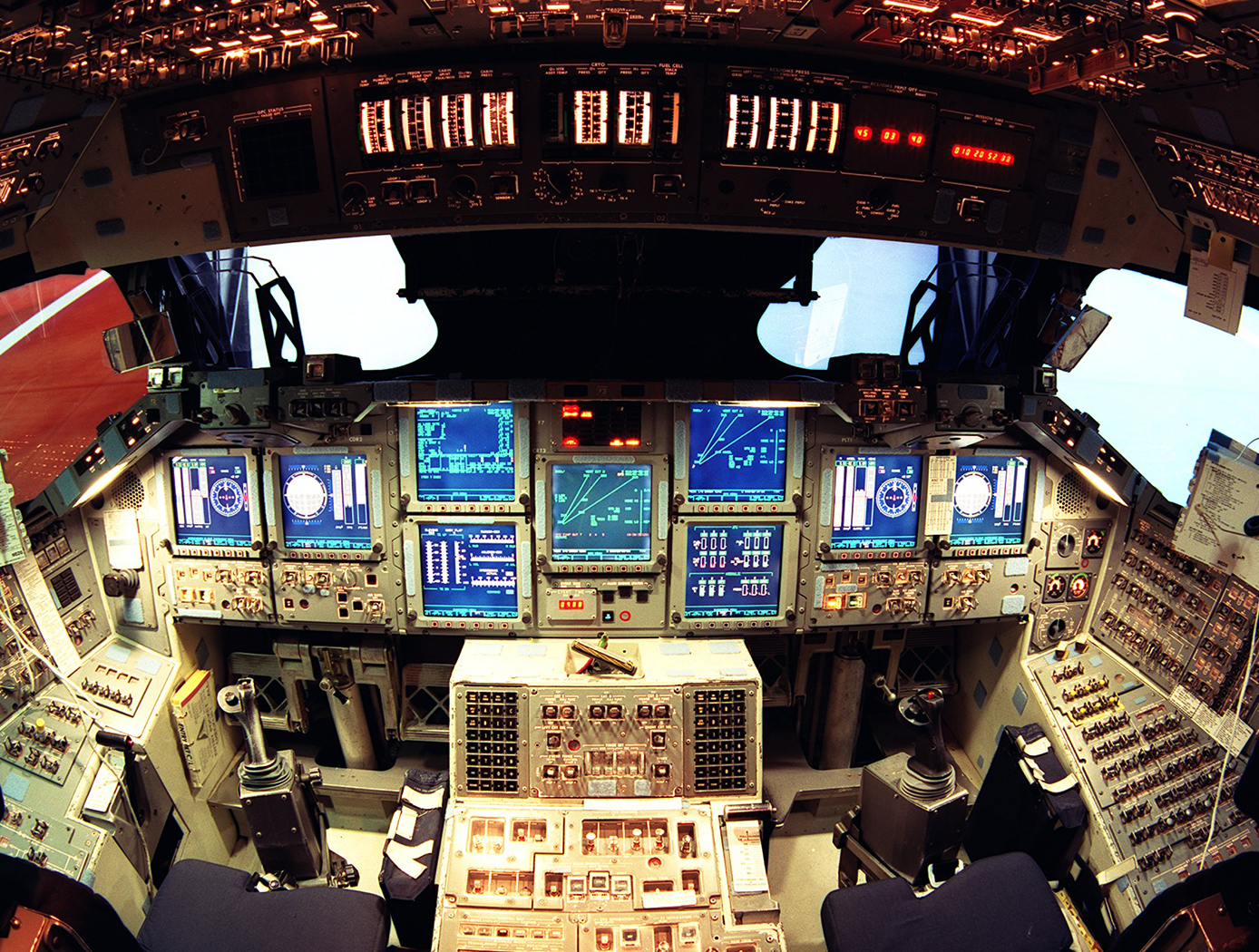
Sensing Magnetic Fields
This technology is part of Armstrong's portfolio of fiber optic sensing technologies known as FOSS. The innovation leverages Armstrong's cutting edge work in this area, including its patented FBG interrogation system, which allows for a diverse set of engineering measurements in a single compact system. In addition to magnetic field, other measurements include structural shape and buckling modes, external loads, and cryogenic liquid level. The system and measurement technology is commercially available for research applications. In addition to capitalizing on the significant advancements in fiber optic and laser technologies that have been made to support the telecommunications industry, Armstrong has also partnered with UCLA's Active Materials Lab (AML) to tap their expertise in the field of magnetics.
For more information about the full portfolio of FOSS technologies, see DRC-TOPS-37 or visit https://technology-afrc.ndc.nasa.gov/featurestory/fiber-optic-sensing
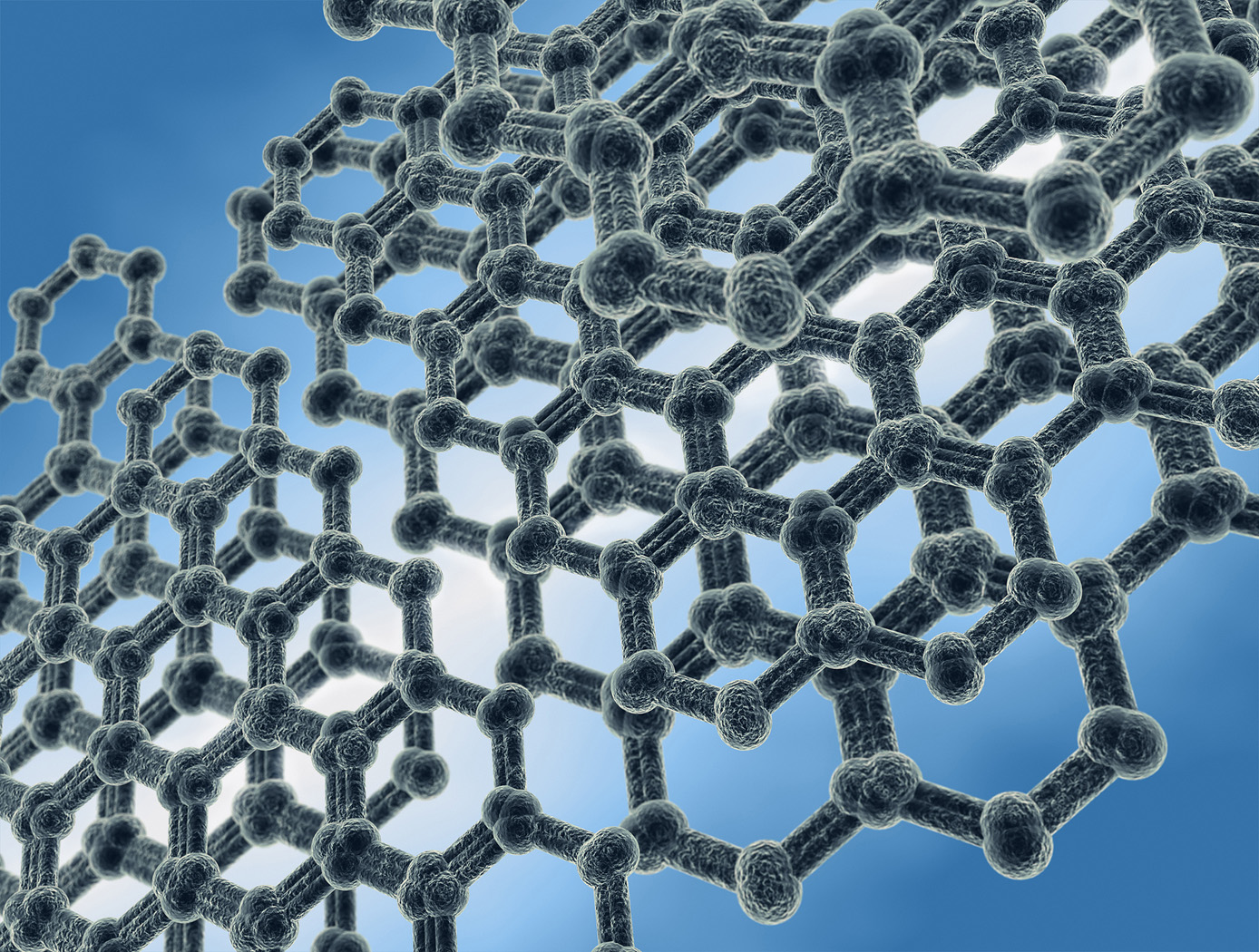
Electrical Response Using Nanotubes on a Fibrous Substrate
A resistor-type sensor was fabricated which has a network of cross-linked SWCNTs with purity over 99%. An ordinary cellulose paper used for filtration was employed as the substrate. The filter paper exhibits medium porosity with a flow rate of 60 mL/min and particle retention of 5-10m. The roughness and porosity of the papers are attractive because they increase the contact area with the ambient air and promote the adhesion to carbon nanotubes. The SWCNTs were functionalized with carboxylic acid (COOH) to render them hydrophilic, thus increasing the adhesion with the substrate. The functionalized SWCNTs were dispersed in dimethylformamide solution. The film composed of networks of cross-linked CNTs was formed using drop-cast coating followed by evaporation of the solvent. Adhesive copper foil tape was used for contact electrodes. Our sensors outperformed the oxide nanowire-based humidity sensors in terms of sensitivity and response/recovery times.

Capacitive Pressure Sensor System and Packaging
Pressure sensors play an important role in engine maintenance and monitoring systems by diagnosing problems before they happen. To capture the most accurate data, however, these sensors must be placed directly on an engine. In order to withstand extreme temperature and vibration, traditional pressure sensor technologies are bulky and complex, lacking the on-board control of microsystem technologies. Glenn's new capacitive pressure sensor system and packaging is the first of its kind to achieve high-temperature capability while maintaining miniaturization.
This novel system consists of a Clapp-type oscillator that is fabricated on a high temperature alumina substrate. It comprises a silicon carbide (SiC) nitride pressure sensor, a metal-semiconductor field-effect transistor, and one or more chip resistors, wire-wound inductors, and SiC metal-insulator-metal (MIM) capacitors. The pressure sensor is located in the tank circuit of the oscillator so that a variation in pressure causes a change in capacitance, thus altering the resonant frequency of the sensing system. The chip resistors, inductors, and MIM capacitors have been characterized at temperature and operational frequency, and exhibit less than 5% variance in electrical performance. The system, which can be installed with a borescope plug adaptor in an on-wing operating engine, has been extensively tested and proven to operate reliably under extreme conditions. Its compact size, wireless capability, and ability to provide real-time in-situ data acquisition make this technology a game-changer in next-generation maintenance and monitoring systems.
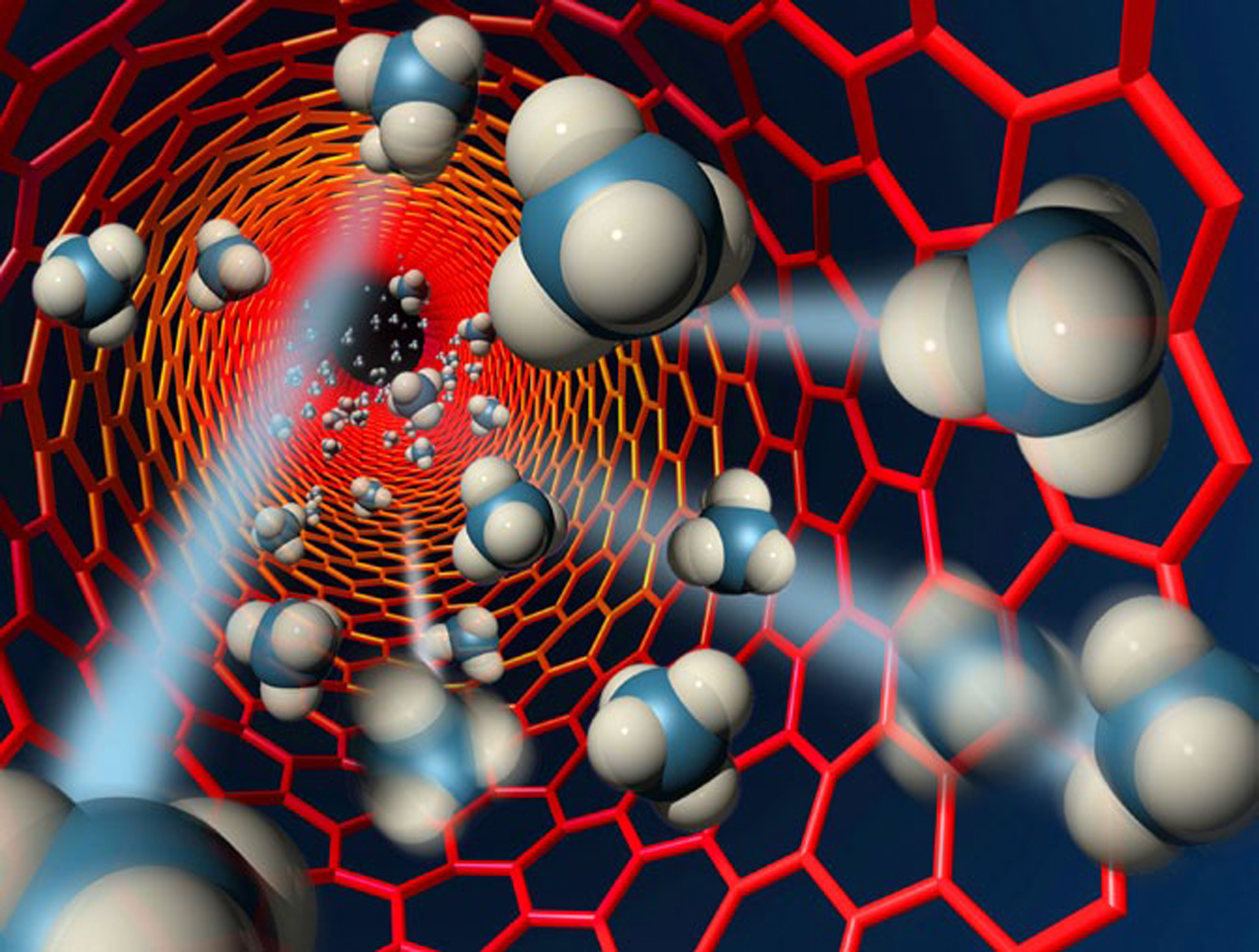
Gas Composition Sensing Using Carbon Nanotube Arrays
An array of carbon nanotubes (CNTs) in a substrate is connected to a variable-pulse voltage source. The CNT tips are spaced appropriately from the second electrode maintained at a constant voltage. A sequence of voltage pulses is applied and a pulse discharge breakdown threshold voltage is estimated for one or more gas components, from an analysis of the current-voltage characteristics. Each estimated pulse discharge breakdown threshold voltage is compared with known threshold voltages for candidate gas components to estimate whether at least one candidate gas component is present in the gas. The procedure can be repeated at higher pulse voltages to estimate a pulse discharge breakdown threshold voltage for a second component present in the gas.
The CNTs in the gas sensor have a sharp (low radius of curvature) tip; they are preferably multiwall carbon nanotubes (MWCNTs) or carbon nanofibers (CNFs), to generate high-strength electrical fields adjacent to the current collecting plate, such as a gold plated silicon wafer or a stainless steel plate for breakdown of the gas components with lower voltage application and generation of high current. The sensor system can provide a high-sensitivity, low-power-consumption tool that is very specific for identification of one or more gas components. The sensors can be multiplexed to measure current from multiple CNT arrays for simultaneous detection of several gas components.

Flexible Body Control Using Fiber Optic Sensors (FlexFOS)
Aerospace vehicles experience flexible dynamics that have adverse effects on guidance, navigation, and control. Vehicles that include automated control are further affected by flexible modes and structural vibrations. Flexible dynamics become even more critical as demand for larger and more fuel efficient vehicles increases.
Using fiber optic technology to collect both flexible and rigid body information enables increased knowledge (data) of the state of a vehicle, a more robust collection method against weather conditions, and a more cost-effective measurement method. This technology could potentially be applied to aerospace vehicles as well as commercial space structures, commercial aerospace structures, cranes, buildings, or bridges - anything with a large cross sectional ratio.
The RSS is the key to developing a sensor which provides flexible body kinematics. A reference structure must be chosen that minimizes weight impacts while retaining structural integrity. The reference structure material must also be very predictable and repeatable. Once this geometry has been optimized, analyzed, and mapped it is integrated with strain sensors making it a Reference Strain Structure. The RSS must then be integrated into an adaptive structure, which both protects and provides a connection to the desired structure to be measured.
The RSS combined with the properly designed algorithms provides the capability and portability to be installed on any of the aforementioned structures alleviating unique engineering and calibration required for each structure or vehicle. It also provides the capability to employ actuators to counteract the effects of structural vibrations. FlexFOS provides a simple, portable solution adaptable to any structure.
View more patents



